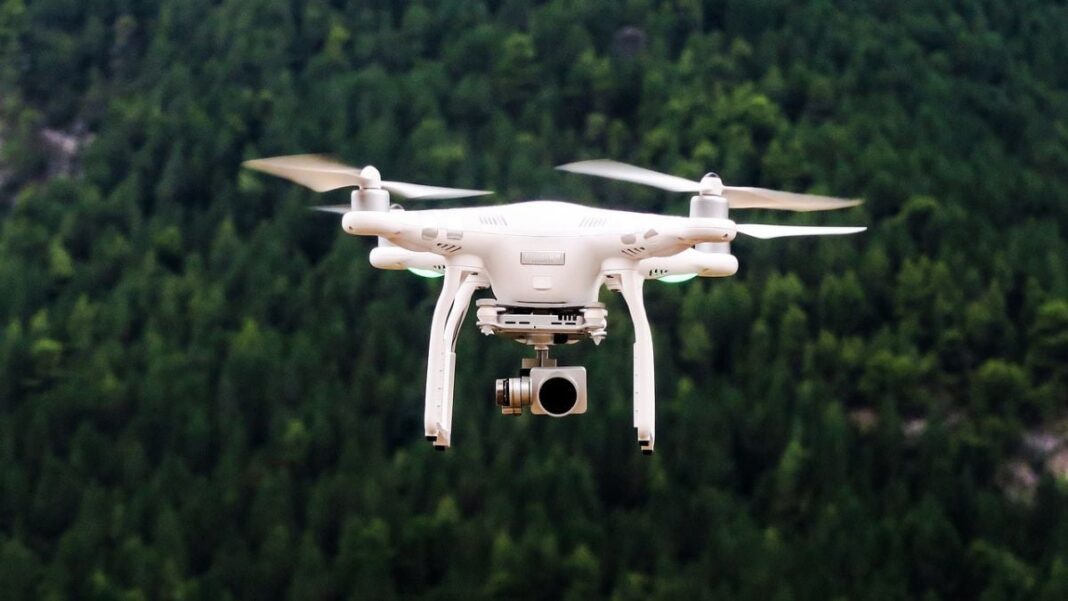"Enhancing Drone Navigation with Celestial Stars: A Game-Changer in UAV Technology"
In a groundbreaking development by scientists at the University of South Australia (UniSA), a new celestial navigation system is set to revolutionize drone operations by enabling uncrewed aerial vehicles (UAVs) to navigate using stars. This innovative approach not only eliminates the reliance on GPS signals but also enhances drone stealth and resilience against jamming attacks, marking a significant leap forward in navigation technology. Published in the journal Drones, this research promises a cost-effective and robust solution for drone navigation.
Design and Functionality of the System
Integrating visual observations of stars with conventional autopilot technology, the new navigation system is designed to be lightweight and affordable, catering to the needs of smaller drones. Samuel Teague, a researcher at UniSA, highlighted the compact and simplified nature of this system compared to traditional star-based navigation setups, which are typically bulky and expensive, primarily used in spacecraft and large aircraft. Extensive testing on a fixed-wing UAV showcased the system’s impressive precision in determining location, boasting an accuracy of up to 2.5 miles (4 kilometers). This level of accuracy is particularly crucial in environments where GPS signals are disrupted, such as during electronic warfare scenarios.
Potential Applications in Defence and Civil Sectors
The system’s ability to operate independently of external signals has garnered attention for its potential applications in both military and civilian domains. UniSA scientist Javaan Chahl noted that the system could support environmental monitoring in remote areas and facilitate long-duration surveillance missions in GPS-compromised regions. With the escalating concerns surrounding drone vulnerability to GPS jamming—reportedly utilized during conflicts like the one in Ukraine—the utilization of celestial navigation presents a strategic advantage. By evading detection and interception through this innovative navigation method, drones could significantly impact offensive and defensive military strategies, enhancing their role in modern warfare and civilian operations alike.
This pioneering technology is poised to reshape the landscape of drone navigation, offering a resilient and versatile alternative that addresses critical challenges faced in contemporary UAV operations.
Conclusion
The introduction of a celestial navigation system for drones marks a significant advancement in the realm of UAV technology. By harnessing the power of stars for navigation, drones are now equipped with a reliable and robust method that enhances their operational capabilities and resilience in challenging environments. This innovation not only sets the stage for future advancements in drone technology but also underscores the growing importance of versatile navigation systems in modern warfare and civilian applications.
Frequently Asked Questions
- How does the new celestial navigation system enhance drone operations?
- The system enables drones to navigate using stars, eliminating reliance on GPS signals and enhancing stealth and resilience against jamming attacks.
- What are the potential applications of this technology in the defence sector?
- The system could support environmental monitoring in remote areas and facilitate long-duration surveillance missions in GPS-compromised regions.
- Why is the precision of drone navigation crucial in environments where GPS signals are disrupted?
- In scenarios like electronic warfare, accurate navigation is essential for ensuring operational effectiveness and mission success.
- How does celestial navigation offer a strategic advantage in modern warfare?
- By evading detection and interception, drones utilizing celestial navigation can impact offensive and defensive military strategies significantly.
- What are the key benefits of the new navigation system for smaller drones?
- The system is lightweight, affordable, and offers a level of precision that is essential for smaller drones operating in challenging environments.
- How does this innovation contribute to the evolution of drone technology?
- The introduction of celestial navigation represents a milestone in enhancing the capabilities and resilience of drones, paving the way for further advancements in UAV technology.
- What makes the new system more compact and simpler than traditional star-based navigation setups?
- The integration of visual observations of stars with conventional autopilot technology streamlines the navigation process, making the system more efficient and cost-effective.
- How could celestial navigation impact civilian applications of drones?
- The system’s ability to operate independently of external signals opens up possibilities for applications like environmental monitoring and surveillance in remote areas.
- What role does resilience play in the context of drone navigation systems?
- Resilient navigation systems are essential for ensuring uninterrupted drone operations and mitigating the risks associated with signal disruptions or jamming attacks.
- What implications does the development of this navigation system have for the future of drone technology?
- The introduction of celestial navigation sets a new standard for navigation systems in drones, emphasizing the importance of versatile and reliable technologies in shaping the future of UAV operations.
Tags: Drone Technology, Celestial Navigation, UAV Operations, Navigation Systems, GPS Signals, Military Strategy, Innovation, Resilience, Modern Warfare, Civilian Applications.
- The introduction of celestial navigation sets a new standard for navigation systems in drones, emphasizing the importance of versatile and reliable technologies in shaping the future of UAV operations.

